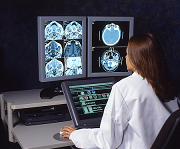Will you have to be ready to use ICD-10 coding by October 1, 2015? The answer is: "perhaps". Current  law says that this will be the earliest date for its implementation. CMS, the Centers for Medicare and Medicaid Services, has stated that there will be no further extensions. And, at the time of this writing, there is no indication that an ICD-10 extension will be included as part of legislation that would also extend the current Medicare fee schedule beyond its planned March 31st expiration, but this could change as negotiations continue in Washington this week.
law says that this will be the earliest date for its implementation. CMS, the Centers for Medicare and Medicaid Services, has stated that there will be no further extensions. And, at the time of this writing, there is no indication that an ICD-10 extension will be included as part of legislation that would also extend the current Medicare fee schedule beyond its planned March 31st expiration, but this could change as negotiations continue in Washington this week.
As we have reported in a previous article, there are many good reasons to prepare for ICD-10 even if the Medicare program never requires it to be used! The key to readiness is to improve clinical documentation so that the coding and billing team can do the best job possible to maximize your practice reimbursement, and this approach will also help improve your billing immediately.
Before any documentation improvements can be made, you must understand where you are now in relation to where you want to be. Using a process called "Gap Analysis" is one way to develop that understanding. Begin by identifying ICD-9 codes in current use that are "unspecified" or "NOS" (not otherwise specified). These may already be diminishing your reimbursement today, and they certainly will not be allowed under ICD-10.
Reviewing Explanations of Benefits that are received from Medicare and other insurers can identify another area that is ripe for improvement. Look for denials due to medical necessity and lack of prior authorization, and then investigate their root cause. Authorization denials are not always caused by a lack of authorization; sometimes they are due to a failure to document the authorized diagnosis. Improving the data submitted will yield better reimbursement in a more timely manner.
This is only the beginning of the Gap Analysis process. Our free white paper, “How to Use Gap Analysis to Determine Your ICD-10 Readiness and Improve Current Reimbursement”, covers the six steps you need to take in detail. Be sure to subscribe to this blog for further updates and advice about the ICD-10 transition -- including any changes that could impact radiology practices specifically.
Related articles:
Why Radiology Practices Should Not Stop Preparing for ICD-10



